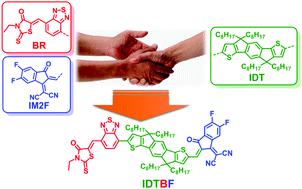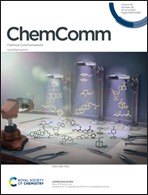An asymmetric end-capping strategy enables a new non-fullerene acceptor for organic solar cells with efficiency over 10%†
Abstract
Two different terminal groups, rhodanine-flanked benzo[c][1,2,5]thiadiazole (BR) and 2-(5,6-difluoro-3-oxo-2,3-dihydro-1H-inden-1-ylidene)malononitrile (IM2F), were connected to an indaceno[1,2-b:5,6-b′]dithiophene (IDT) core to construct a new non-fullerene acceptor (IDTBF). Solar cells based on this acceptor exhibited promising photovoltaic performances with a power conversion efficiency (PCE) of up to 10.43%.



 Please wait while we load your content...
Please wait while we load your content...